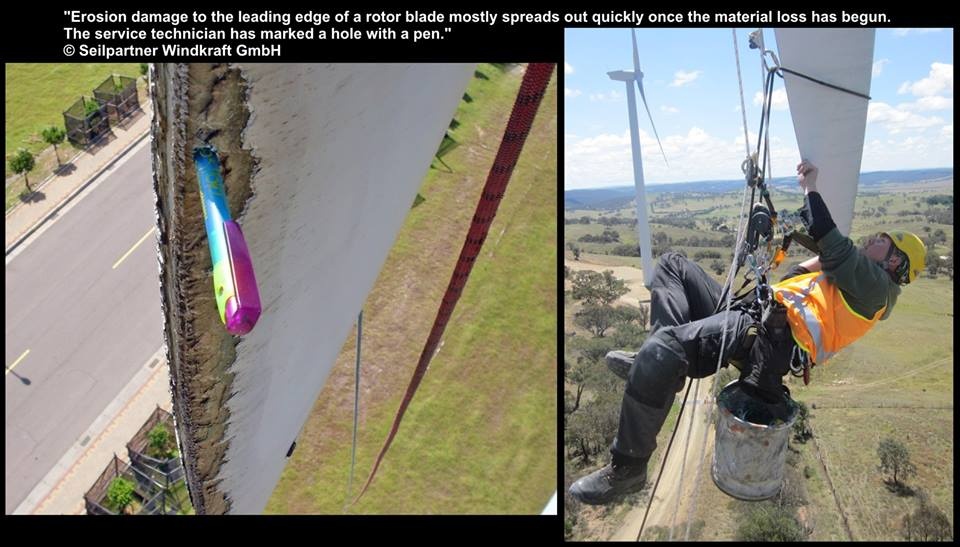Rising Costs Push Offshore Wind Farms Out Of Favor

Table of Contents
Soaring Inflation and Supply Chain Disruptions
The impact of rising offshore wind costs is significantly influenced by global economic factors. Inflation and supply chain disruptions are two key culprits.
-
Global inflation has significantly increased the price of essential materials: Steel, concrete, and rare earth elements crucial for wind turbine construction and installation have seen dramatic price increases. This directly translates to higher manufacturing costs for turbine blades, towers, and foundations.
-
Supply chain bottlenecks have created significant delays: The ripple effects of the pandemic and the war in Ukraine have caused major disruptions in the global supply chain, leading to extended lead times for crucial components. This means projects are delayed, increasing labor costs and further driving up the overall project expense.
-
Complex offshore logistics exacerbate the problem: The challenges of transporting and assembling massive wind turbines in harsh offshore environments add another layer of complexity and cost. Specialized vessels, skilled labor, and unpredictable weather conditions contribute to higher operational expenditures.
The specific impact of inflation can be seen in individual components. For instance, the cost of steel for turbine towers has increased by over 30% in some regions, and the lead time for specialized turbine blades has doubled in certain cases. Several large-scale offshore wind projects across Europe and North America are experiencing significant delays, directly attributable to supply chain issues. These delays not only increase costs but also push back the timeline for achieving renewable energy targets.
Increased Financing and Permitting Costs
Beyond material costs, the financial landscape for offshore wind projects is also shifting. Securing funding and navigating regulatory hurdles present substantial challenges.
-
Project financing is becoming increasingly challenging: Investors are becoming more risk-averse given the rising costs and potential for delays. This translates into higher interest rates and more stringent due diligence processes, making it harder to secure the necessary financing.
-
Permitting processes are lengthy and complex: Offshore wind projects often require navigating multiple regulatory bodies and environmental impact assessments, leading to substantial delays and added legal and consulting fees. This bureaucratic burden adds significant costs to the overall project timeline.
-
Inherent risks associated with offshore construction increase insurance premiums: The unpredictability of weather conditions, the complex logistics, and potential for unforeseen complications during construction increase the risk profile of offshore wind projects. This leads to higher insurance premiums and further inflates project financing costs.
Securing project finance for offshore wind now requires extensive risk assessments and detailed financial modelling to account for these uncertainties. The increased scrutiny from investors is driving up the cost of capital and making it more challenging for developers to secure funding for new projects. Projects facing significant permitting delays often see millions of dollars in additional expenses, pushing back their operational start dates and impacting their overall profitability.
Technological Challenges and Innovation Gaps
While technological advancements are crucial for the future of offshore wind, the pace of innovation has not yet matched the escalation in costs.
-
Innovation hasn't kept pace with cost escalation: While turbine designs are improving in terms of efficiency and size, the cost reductions haven't been sufficient to offset the rising prices of materials and logistics.
-
Grid connection challenges add significant costs: Integrating large amounts of intermittent renewable energy from offshore wind farms into existing electricity grids requires significant upgrades and investment in transmission infrastructure. These grid connection challenges add a substantial layer of cost to the overall project.
-
Floating offshore wind technology, while promising, is still expensive: While floating offshore wind turbines offer the potential to tap into deeper waters, the technology is still relatively nascent, and the costs associated with design, installation, and maintenance are currently higher than for fixed-bottom turbines.
Addressing these technological hurdles requires significant investment in research and development. Exploring alternative turbine designs, focusing on improved efficiency, and developing more cost-effective grid integration strategies are crucial steps in making offshore wind more economically viable. Further innovation in materials science and construction techniques could also play a crucial role in reducing the overall cost of offshore wind projects.
The Search for Alternative Solutions
Given the challenges facing offshore wind, exploring alternative renewable energy solutions is becoming increasingly important. Onshore wind projects and solar power, for instance, often present more cost-effective options, particularly in regions with suitable land availability and favorable solar irradiance. Furthermore, advancements in energy storage technologies can mitigate the intermittency challenges associated with renewable sources.
Conclusion
Rising costs are undeniably impacting the feasibility of offshore wind farms, forcing a critical review of project viability and prompting a search for alternative solutions. Inflation, supply chain issues, financing difficulties, and technological challenges all contribute to this growing concern. While offshore wind energy remains a crucial component of a sustainable energy future, addressing the rising costs through technological innovation, streamlined permitting processes, and improved risk management is essential to ensure its continued development. We need innovative solutions to overcome these challenges and unlock the true potential of offshore wind, while simultaneously exploring cost-effective alternatives to mitigate the risks associated with rising offshore wind costs. Let's work together to create a more affordable and accessible future for offshore wind energy.

Featured Posts
-
 Ufc Des Moines Fight Card What Time Does It Start Tonight
May 04, 2025
Ufc Des Moines Fight Card What Time Does It Start Tonight
May 04, 2025 -
 2023
May 04, 2025
2023
May 04, 2025 -
 Denver Nuggets President On Russell Westbrooks Impact
May 04, 2025
Denver Nuggets President On Russell Westbrooks Impact
May 04, 2025 -
 Former Ufc Champions Return May 3rd Fight Against Bantamweight Veteran
May 04, 2025
Former Ufc Champions Return May 3rd Fight Against Bantamweight Veteran
May 04, 2025 -
 Sydney Sweeney And Jonathan Davino Split Actress Shows Off Figure
May 04, 2025
Sydney Sweeney And Jonathan Davino Split Actress Shows Off Figure
May 04, 2025
